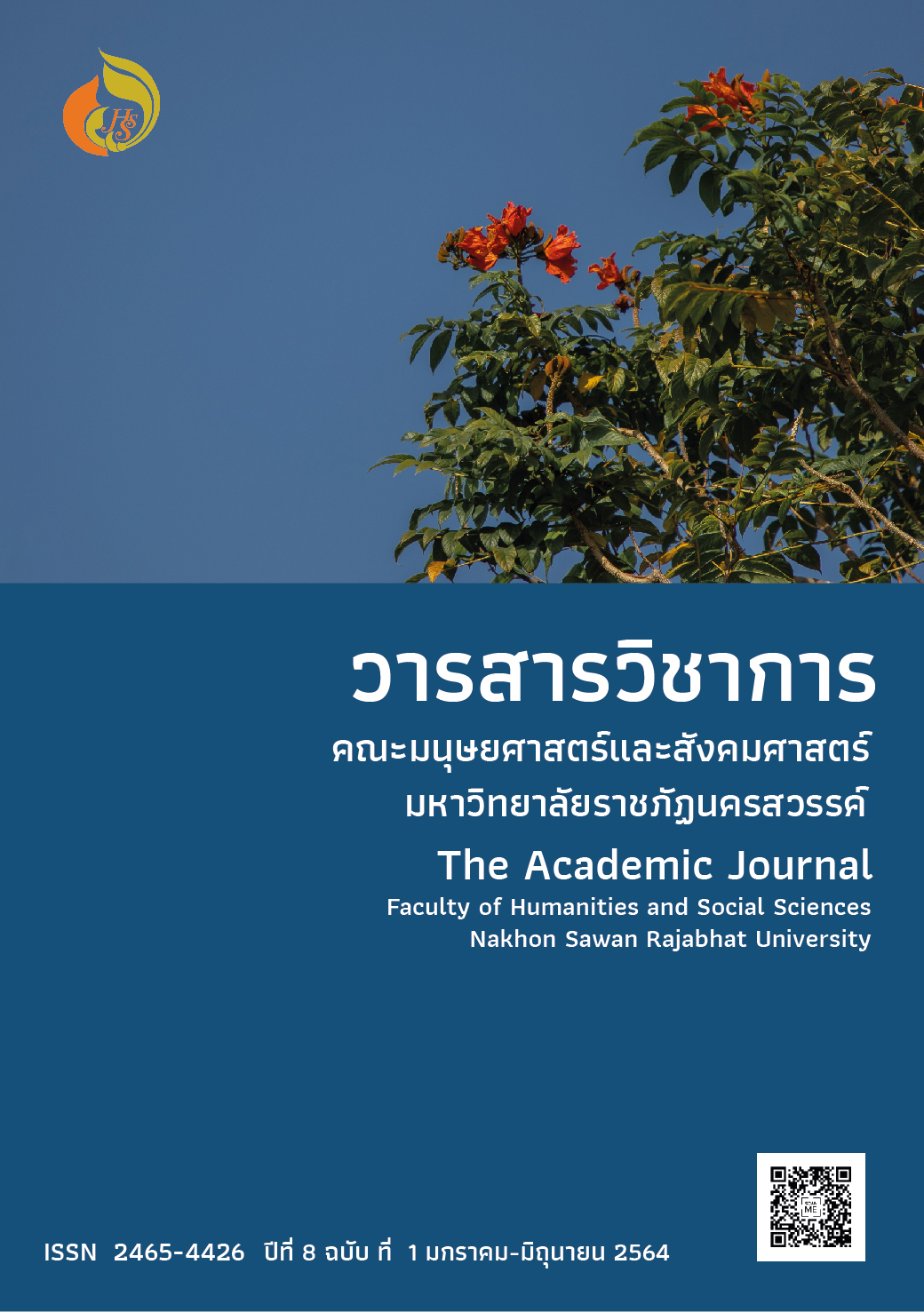Creative Leather Handicraft: Case Study of Leather Products from Leather Leftover in Leatherwork Industry
Main Article Content
Abstract
The research aimed 1) to study backgrounds and development of the leatherwork in Thailand, 2) to examine processes of the leather production, characteristics and features of different types of the leather, 3) to create southern-style leather products from leather leftovers, and 4) to propagate a technique of leatherwork creation to students at Wat Koh Tham School, Khao Rup Chang Sub-district, Mueang District, Songkhla Province.
The research samples included students at Wat Koh Tham School, Khao Rup Chang Sub-district, Mueang District, Songkhla Province and the year-3 students in the leatherwork design course, totaling 30 persons. The findings revealed that in Thailand, animal leathers have been applied as objects or utensils for long time. The leather production processes are different based on tanning methods and leather types. Their characteristics were similar, with good balance when molded and waterproof quality. The difference was color shade that there was only one shade for vegetable-tanned leathers, and various shades for chrome-tanned leathers. For the design and development, the researcher produced the leatherwork with hand-sewing method provided that the design was consistent with the qualities of materials and utilities and reflected natures and local cultures of Southern Region. Additionally, the product design shall meet the market’s need and the production method must be easily performed.
The research result indicated that the leather leftovers in the leatherwork industry were suitable for further application with uncomplicated production methods. Different types of the leather were employed to design a single product with diverse color placement and dissimilar leather types, meticulously sewn and decorated with local materials. The product is usable and can be extended for larger scale of production for distribution.
Article Details

This work is licensed under a Creative Commons Attribution-NonCommercial-NoDerivatives 4.0 International License.
References
ชนินทร์ จิตต์โกมุท. (2551). ความรู้เรื่องเครื่องหนัง. กรุงเทพฯ: โรงพิมพ์แห่งจุฬาลงกรณ์มหาวิทยาลัย.
ชิสิกกา วรรณจันทร์. (2547). ออกแบบผลิตภัณฑ์อุตสาหกรรม. นครราชสีมา: มหาวิทยาลัยราชภัฏนครราชสีมา.
ธวัชชัย เทียมประทีป. (2555). ผลิตภัณฑ์เครื่องหนังกระเป๋า. กรุงเทพฯ: วาดศิลป์ .
พจน์ธรรม ณรงค์วิทย์. (2557). การศึกษาและพัฒนากระบวนการใช้ประโยชน์จากเศษหนังเหลือทิ้ง กลุ่มวิสาหกิจขนาดกลาง และขนาดย่อม (SMEs). กรุงเทพฯ: สถาบันเทคโนโลยีพระจอมเกล้า เจ้าคุณทหารลาดกระบัง.
พรรณณิษา เมืองผุย. (2551) ปัจจัยที่มีอิทธิพลต่อพฤติกรรมการซื้อผลิตภัณฑ์กระเป๋ายี่ห้อชั้นนำของผู้บริโภค ในเขตกรุงเทพมหานคร. กรุงเทพฯ: มหาวิทยาลัยรามคำแหง.
ไพเวช วังบอน. (2551). หลักสูตรการอบรมโครงการพัฒนาบุคลากรด้านผลิตภัณฑ์และบรรจุภัณฑ์. กรุงเทพฯ: ม.ป.ท.
มนตรี ยอดบางเตย. (2538). ออกแบบผลิตภัณฑ์. กรุงเทพฯ: โอเดียนสโตร์ .
วัชรินทร์ จรุงจิตสุนทร. (2548). หลักการแนวคิดการออกแบบผลิตภัณฑ์. กรุงเทพฯ: แอปป้าพริ้นติ้งกรุ๊ป.
สมควร สนองอุทัย. (2553). เครื่องหนังทฤษฎีสู่การปฏิบัติ. กรุงเทพฯ: ทริปเพิ้ล เอ็ดดูเคชั่น.
อนันต์ รัศมี. (2520). หัตถกรรมเครื่องหนัง. พิมพ์ครั้งที่ 2. กรุงเทพฯ: ม.ป.ท.


